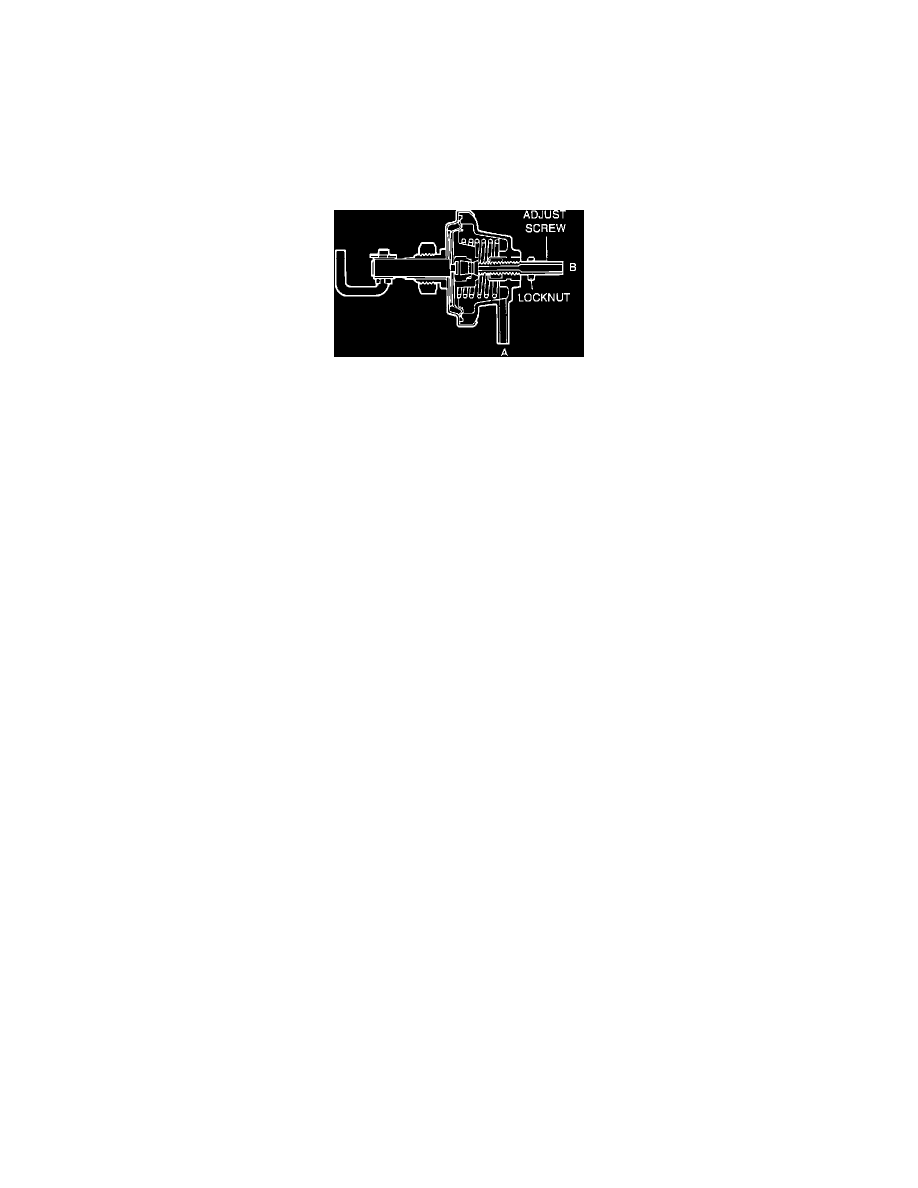B Series Truck L4-2184cc 2.2L 2200 (1988)

Idle Up Control Valve: Description and Operation
The servo diaphragm, located on the carburetor next to the throttle lever, is a vacuum diaphragm which opens the throttle slightly, increasing idle speed
to compensate for loads on the engine at idle, such as A/C compressor or transmission load (auto trans).
One of two different servo diaphragm assemblies are used, depending on whether the vehicle is equipped with manual or automatic transmission and
with or without A/C.
Vehicles with manual transmission and A/C, and vehicles with automatic transmission without A/C, use a single stage idle up servo, which is a simple
vacuum actuator.
Dual Stage Idle-up Servo
Vehicles equipped with both automatic transmission and A/C use a dual stage idle up servo. The dual stage servo has two vacuum ports. When vacuum is
applied to one port (port "B"), the idle is increased only slightly (approx. 100 rpm) to compensate for the load of the transmission being in a drive gear.
When vacuum is applied to the other port (port "A"), the idle speed is increased more (approx. 450 rpm) to reduce vibration from the A/C compressor
and help the A/C system operate more efficiently when the engine is idling.
Vacuum is supplied to the servo (both types) through an ECU controlled vacuum solenoid valve. The single stage servo requires only one vacuum
solenoid valve, while the dual stage servo requires two (one for each vacuum port).
